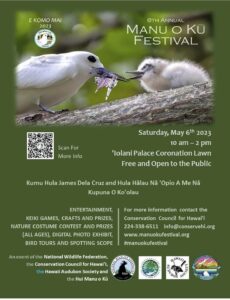
May 1, 2023
When in 1961 a birder reported a fairy tern egg in a Koko Head kiawe tree, no one imagined what that first-ever egg in the Main Hawaiian Islands meant for the future. At the time, the species, native to the tropics worldwide, raised chicks in Hawaii only on islands in the Northwest Chain. Starting in the 1960s, however, for reasons only the birds know, some began choosing Oahu’s south side to set up housekeeping. Today, Honolulu hosts a colony of about 3,000 of these charming seabirds, admired year-round by countless residents, visitors, students, and sailors.
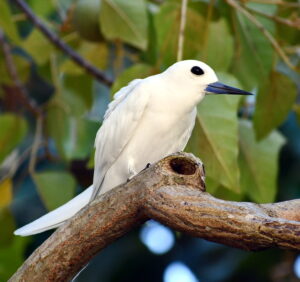
Admirers (right) watch a tern parent (above) in a kukui tree at the UH Manoa campus. ©Susan Scott
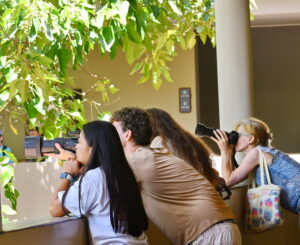
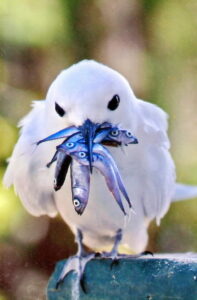
Traditional Polynesian navigators value these birds because parents carry seafood to their waiting chicks crosswise in their beaks, showing sailors the course to land. Because of this cultural significance, and the increasing bird population, in 2007 the manu o Kū was declared the bird of Honolulu. (Photographer unknown)
Honolulu received the honor of having an official bird because so far the terns only breed between Hawaii Kai and Pearl Harbor. Time will tell if the species spreads to other parts of Oahu and the other main islands. If so, we’ll know fast. Because these birds build no nest, laying their single egg on a divot of a branch or in a dent on a ledge, eggs and chicks are visible. And there, out in the open for human admirers to watch and photograph, fairy tern parents cuddle, feed, and tend their chick.
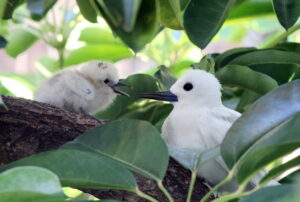
Sunny Donenfeld, V.P. and Treasurer of Punahou School, recently shared with me the above and below photos he shot from the Kahala Hilton garage roof. 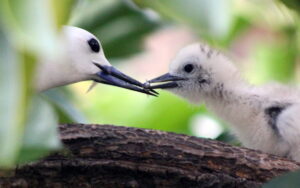
About the bird’s names: As languages evolve, names change. In the past, we Hawaii residents called these birds fairy terns, a name that reflects their delicate appearance and enchanting behavior. To many of us, these seabirds are like Tinkerbells in feather costumes, and for that charming image, the fairy name works. People in other parts of the world use other endearing terms for these birds, such as love terns or angel terns.
According to the American Ornithological Society, the official English name for this bird is White Tern, with the organization dictating that all English bird names be capitalized. Although not everyone agrees with the AOS’s chosen name, designating one English name for each bird on the planet provides clarity from region to region, and is generally accepted worldwide.
The Hawaiian name for the bird is manu o Kū, meaning bird of the war god Kū. (Bird names are not capitalized in the Hawaiian language, but god names are.) No one knows why Hawaiians named this bird after a war god. In 1941, a leading Hawaiʻi ornithologist wondered in an article if the bird’s original Hawaiian name might have been manu ‘ohu, meaning bird of mist or fog.
Whatever we choose to call them, these stunning seabirds are one of Hawaiʻi’s most loveable and adaptable native species. Join us Saturday at Iolani Palace to celebrate their existence in the world and presence in our city.
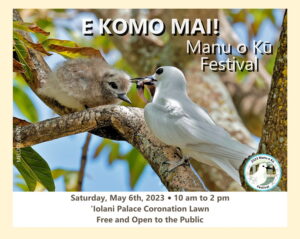
Flyer and photo courtesy of Melody Bentz.